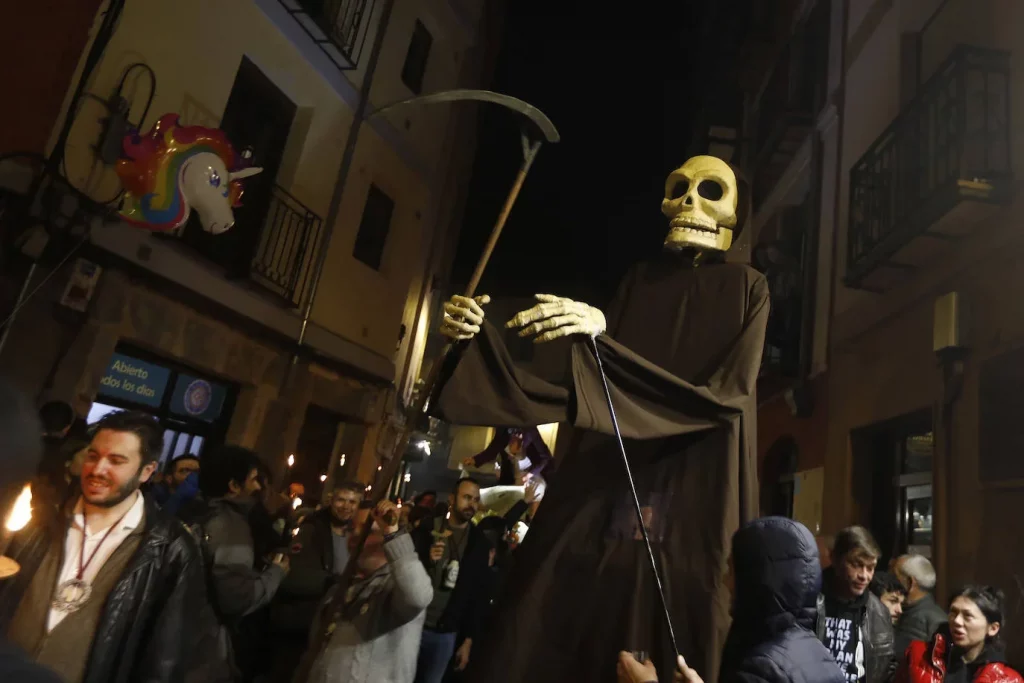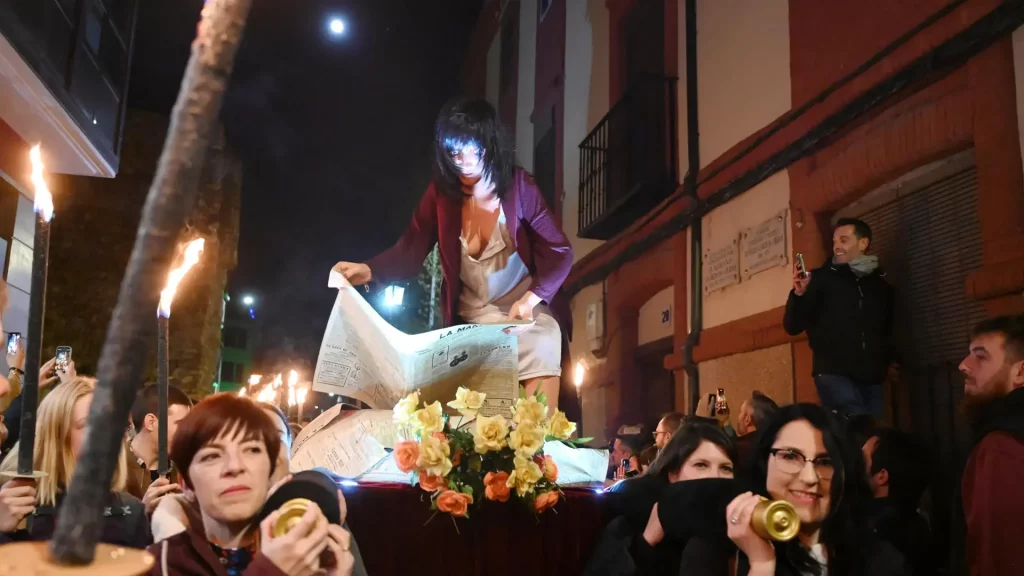On Maundy Thursday in León, while the city dresses in solemnity for its processions, a parallel and very peculiar rite takes place: the Funeral of Genarín. People often speak of “Saint Genarín,” but it’s worth clarifying that Genarín was never a saint. His memory endures thanks to irreverent humor and popular affection rather than any official recognition by the Church. He’s a character turned myth—embodying Leonese cheekiness and the ability to turn a tragedy into a one-of-a-kind celebration.

Who Was Genarín
Genaro Blanco Blanco, known as Genarín, was born in 1861 in Izagre, a small village in León province. Abandoned as a child and raised in an orphanage, he lived a life marked by humility and survival. He worked a variety of jobs—gardener, day laborer, typesetter—and eventually as an itinerant pelt trader, buying and selling small skins. Although his material life was austere, his outgoing character and love of the streets won him the affection of many neighbors.
He delighted in León’s bohemian nightlife. His favorite haunts were the city’s taverns, card games, and brothels, where everyone knew him. His passion for orujo (pomace brandy) was his constant companion and, in time, became inseparable from his legend. Despite his lifestyle, Genarín wasn’t seen as an outcast but as a familiar, well-liked figure whose presence promised conversation and anecdotes.
His end was as colorful as his life. In the early hours of Good Friday in 1929, while urinating by the city wall, he was run over by León’s first garbage truck, nicknamed “La Bonifacia.” He was found by “La Moncha,” a local prostitute, who covered him with a newspaper. That absurd death, ironically, made him immortal.
The Birth of a Pagan Procession
Genarín’s story didn’t end with his death. Barely a year later, four of his friends—nicknamed the “evangelists”—decided to pay him homage. Inspired by his free spirit, they organized an alternative procession on Maundy Thursday night. Instead of incense, there was orujo; instead of prayers, biting verse; and Genarín’s memory became a banner of irreverence and popular humor.
What began as a joke among friends soon drew dozens of people. Year after year, the cortege retraced the old-town bars, reciting satirical poems and remembering a simple man who died in a most peculiar way. The tradition grew so much that it became a parallel act to the official Holy Week.

During the Franco era, the procession was banned for being pagan and festive—considered offensive. After Spain’s transition to democracy, it returned stronger than ever. Today, the Funeral of Genarín stands as one of León’s most singular rites, blending popular tradition with playful irreverence in a celebration unique in Spain.
How It’s Celebrated Today
Every Maundy Thursday night, while religious processions move through the city in silence, León readies itself for a different kind of celebration: the Funeral of Genarín. The evening begins with a burlesque dinner where members recite poems, draft the so-called “Encyclical of the Year,” and christen new brethren with orujo. This moment of camaraderie kicks off the night.
After midnight, the procession sets out—often from emblematic spots like Plaza del Grano—winding through the old town with music, verses, and offerings. The “floats” are unmistakable:
- Genarín, depicted with his bottle and a streetlamp.
- La Moncha, recalling the woman who found his body.
- Death, a clear parody of traditional processions.
- The Cask, a barrel of orujo containing bread, cheese, oranges, and bay leaves—offerings that are hung from the city wall each year in memory of the pelt trader.
The most striking moments are the “stations,” where the procession stops to recite verses laden with irony and social critique. Solemnity gives way to shared laughter. This blend of mockery and popular devotion has turned the Funeral of Genarín into a much-anticipated rite where tradition is reinvented every year.
“Miracles” and Anecdotes
Genarín’s myth has grown to the point where mischievous “miracles” are attributed to him. They say he interceded to cure an ailing prostitute, helped Cultural Leonesa score a decisive goal, and even healed a kidney patient at the very spot where he died. Told with a wink, these tales are part of the popular liturgy surrounding his figure.
Another beloved vignette is that of the “Hanging Brother,” responsible for hoisting the offerings up onto the city wall—a key moment in the procession. Over time, burlesque verse contests and songs dedicated to Genarín have joined the tradition, confirming that this “saint without an altar” belongs to Leonese culture as surely as the Cathedral or the official Holy Week.
The Funeral of Genarín is more than a procession: it’s a symbol of cultural resilience, humor in the face of solemnity, and the people’s knack for transforming misfortune into festive tradition.

A One-of-a-Kind Date in León’s Holy Week
Today the Funeral of Genarín draws hundreds of visitors each year. Many come curious about this different procession, which coexists with the official Holy Week without overshadowing it. León becomes a stage where the sacred and the profane, the solemn and the playful, live side by side.
What’s special is that this event doesn’t seek to compete with religious devotion; it offers another lens—the people’s memory, packed with satire and joy. That’s why the memory of Genarín lives on, not as a saint of the Church, but as a symbol of León.
Where to Stay in León to Experience the Funeral of Genarín
If you want to experience it up close, your best bet is to stay in the historic center. From León Apartamentos you can walk to both the religious processions and the irreverent Funeral of Genarín. Our apartments are fully equipped and just steps from the Cathedral and the city walls—key sites for this tradition. Book direct and enjoy León’s Holy Week with comfort, proximity, and the best price guaranteed.

